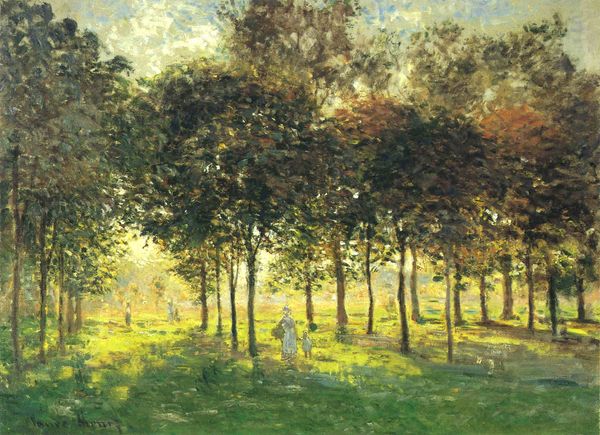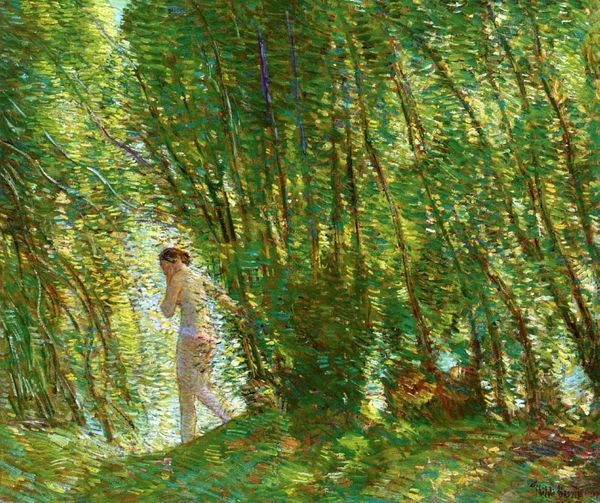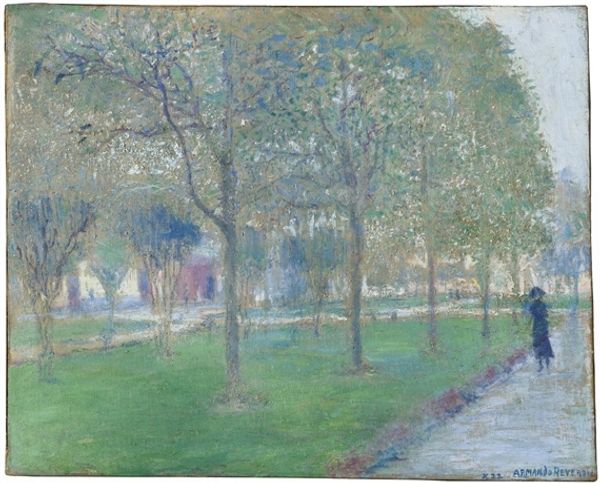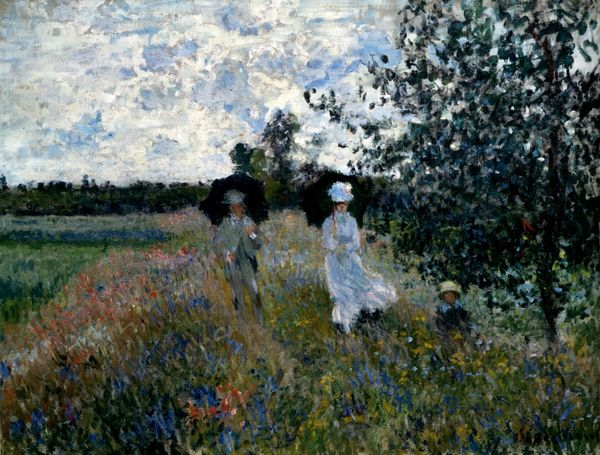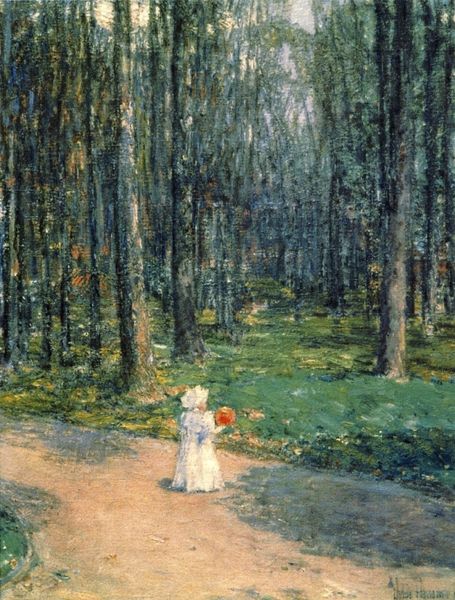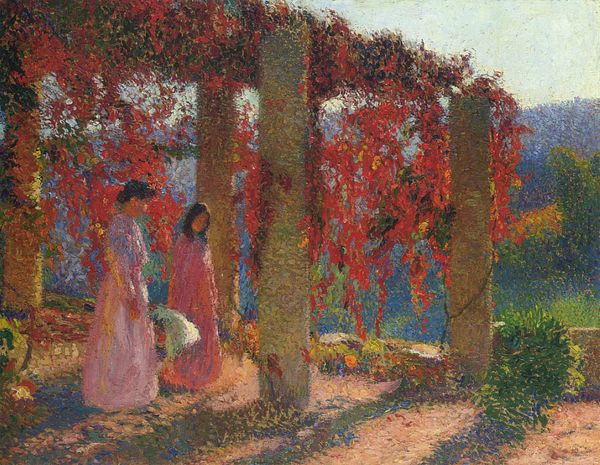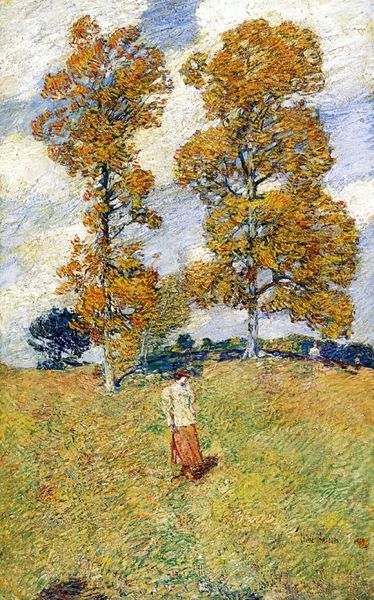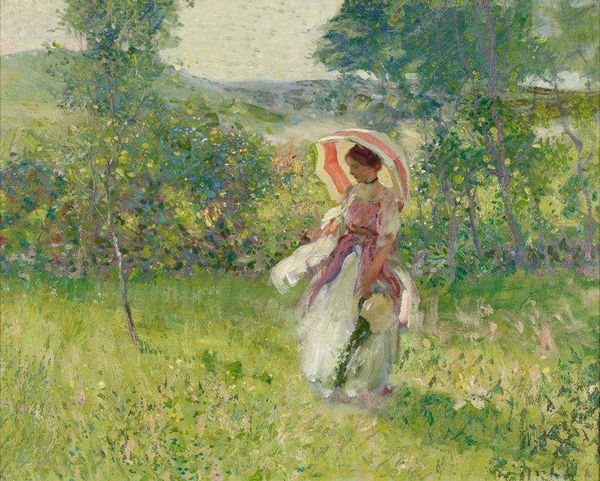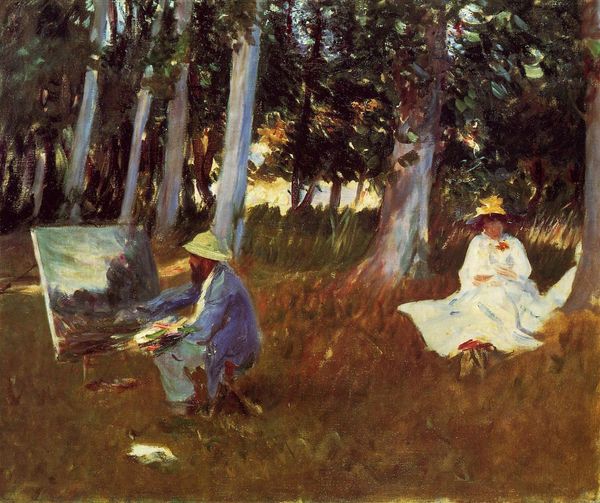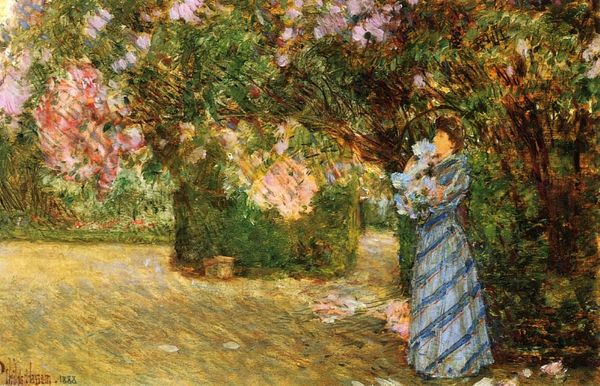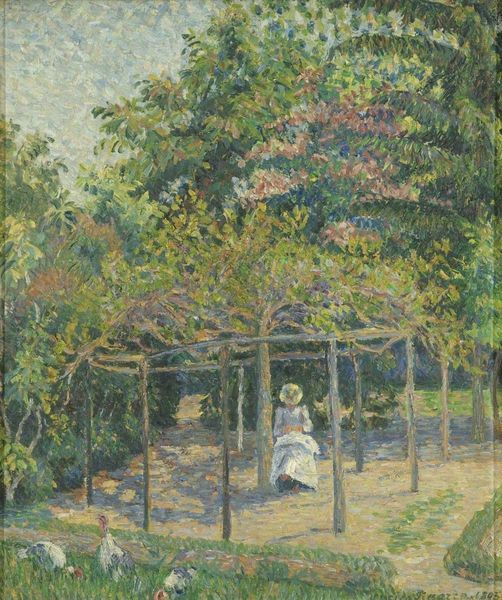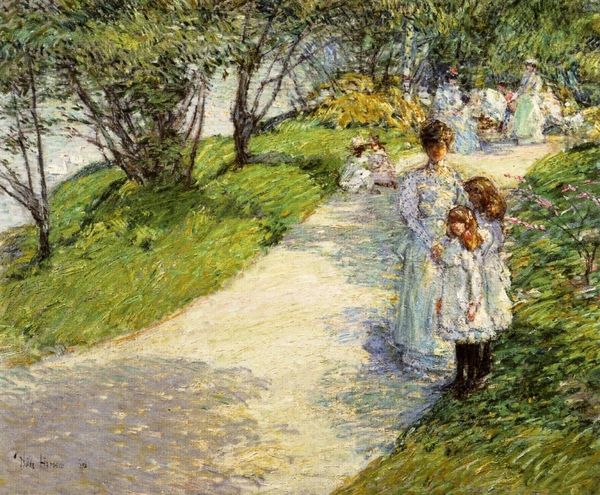
Copyright: Public domain
Editor: So, this is Henri Martin's "Orpheus in a Wood," painted in 1895. The application of oil paint creates a shimmering, almost dreamlike atmosphere. It’s so serene, but there’s also something melancholic about the lone figure. What’s your interpretation of this work? Curator: I see it as a potent commentary on the artist’s position within fin-de-siècle society. Think about the Orpheus myth – a musician whose song could charm all living things, but who ultimately failed to retrieve his love from the underworld. Here, Orpheus is isolated, playing in a sun-dappled forest, yet the vibrant landscape feels tinged with an underlying sense of loss. Editor: Loss of what, specifically? Curator: That's a great question. We have to consider the societal context. The late 19th century was a period of intense social and political upheaval, challenging traditional norms. I think the painting could reflect anxieties about artistic relevance. Is Orpheus singing to a truly receptive audience, or is he isolated, his song lost in the rapidly changing world? His positioning within nature also evokes an opposition between nature and the emerging urban landscape, in dialogue with broader debates about modernity, industrialization, and the loss of traditional ways of life. What does the forest represent for you in relation to those ideas? Editor: I hadn't considered the socio-political angle so explicitly. I was focused on the pure beauty of the impressionistic technique. It is powerful to frame it in that light. Curator: Absolutely! The beauty is undeniable, but it also masks a deeper interrogation of art's role and the artist's identity within a society grappling with rapid change. The canvas offers space for aesthetic enjoyment while urging deeper inquiry and contextualization. Editor: That definitely gives me a new appreciation for the piece. Thanks!
Comments
No comments
Be the first to comment and join the conversation on the ultimate creative platform.
